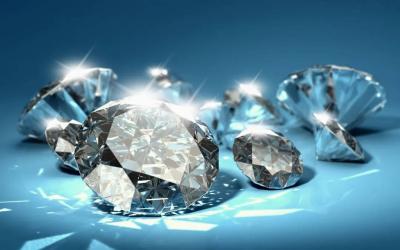Mercury may be the smallest planet in the solar system, but it hides a big secret. New research suggests that the crust on the surface of Mercury conceals a layer of diamond that could be about 18 kilometers thick. Oliver Namur, one of the researchers and a professor at the University of Leuven in Belgium, stated that there are two processes that might be responsible for the formation of the diamond layer. He adds, "The first is the crystallization of a lava ocean, but this process would only lead to the formation of a thin layer of diamond." He continues, "The second process is the crystallization of metals in the core of Mercury," indicating that "when Mercury formed around 4.5 billion years ago, its core was completely liquid and crystallized over time."
The research, published on June 14, suggests that intense pressure caused carbon to crystallize and transform into diamond, which then moved toward the planet's surface, ultimately forming a layer between Mercury's core and its surface. Scientists utilized a large machine to simulate the pressure and temperature present in Mercury's core, placing magnesium silicate under a pressure of 7 pascals and heating it to a temperature of 2177 degrees Celsius to understand how metallic materials change when Mercury was forming and to simulate diamond formation under these conditions.
Namur says that the experiment's results highlight the differences between the formation of Mercury and that of Earth and Mars. Previously, scientists mentioned that there could be more than a quadrillion (a thousand trillion) tons of diamond beneath the Earth's surface, and it is believed that there are minerals in the Earth's core located 160 kilometers from the surface, a depth that humans cannot dig to reach.




